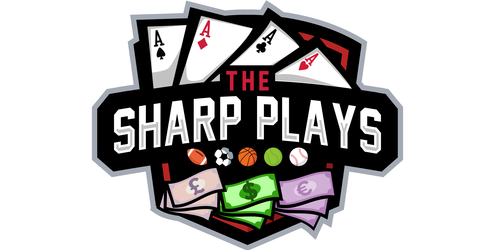Article was originally published on January 24th as part of TSP Daily Briefing. I am adding it to the Articles section of the to save for future reference.
So, Illinois won — but didn’t cover. And while some bettors saw a 3-point line drop as a sign of a “sure” Michigan State cover, the game outcome presents a golden opportunity to clear up some dangerous misconceptions.
Let’s dig in and sharpen your game.
🚫 Buying Out: Stop the Madness
I got plenty of messages yesterday asking:
“Should I buy out of my Illinois bet? The line’s dropping!”
Two big problems here:
1. Buying Out = Giving the Book a Free Shot at You
Most times, buying out means:
- You won’t get the same line as your original bet
- You risk getting middled — losing BOTH wagers
- You’re trying to “fix” a 1-unit position by risking 2.2 units
If you’re panicking over one unit, ask yourself:
Are you betting over your head? 🤔
That’s a separate issue — and a big one.
🔀 Line Moves Are Not Fortune Tellers
Line moves feel meaningful. They play tricks on your brain. But let’s kill that myth with real data and clear logic:
“The line dropped 3 points and Illinois didn’t cover, so clearly the move told us Michigan State was the right side!”
No. That’s confirmation bias.
The reality is much less sexy.
💡 Why Did the Line Move?
Because Michigan State was a MASSIVE public dog.
The volume of public money outweighed the sharp backing of Illinois — and caused the line to drop. That’s it.
So, yes:
- Sharp money was on Illinois
- Public money flooded in on Michigan State
- The line dropped… and sharps still liked Illinois
Conclusion:
➡️ The move didn’t mean shit in predicting the outcome.
📊 Line Move Performance: Worse Than a Coin Flip
Let’s talk results over the last 18 years:
- Following a 1+ point line move in NCAAB:
49.7% win rate (29,000+ games) - Fading the same move:
50.3% win rate
So…
- Following the move? Slightly worse than 50%.
- Fading it? Slightly better — but both lose to the vig.
And no, it doesn’t matter if it’s a favorite or a dog. The numbers are nearly identical across the board.
🎭 The Myth of “Sharp Reverse Line Movement”
You know this one:
“If 70% of tickets are on Team A, but the line moves toward Team B… SHARP ACTION ALERT!”
Sound familiar? It’s the oldest system in the book — and it’s still complete garbage.
18-year performance data:
- Betting the team with <40% of tickets where the line moves in their favor:
49.1% win rate (7,800+ games)
So, even this famous “sharp” strategy loses to a coin toss. 🎯
And Don’t Forget…
One sharp bettor splitting up their bet into 20 tickets looks like 20 different bettors.
Meanwhile, a bunch of public schlubs each toss one ticket in.
➡️ Ticket count ≠ truth.
➡️ Percentages ≠ insight.
I covered this more in [Why Ticket/Money Percentages Don’t Tell the Whole Story] — it’s worth a read.
📉 More Big Line Moves… More Proof
Want more examples? Just from yesterday’s LJP Scores:
- Toronto (NBA):
Opened -3, closed +1.5 (4.5 pt move against them).
Result: Toronto won by 12. - Northern Kentucky (NCAAB):
Opened -1, closed +2 (3 pt move against them).
Result: N. Kentucky won outright by 10.
So much for line movement being the crystal ball.
Following those two moves blindly? 0-2.
🎯 Final Word: Don’t Let Bias Rule Your Bankroll
Yes — Michigan State covered.
Yes — the line moved in their favor.
But don’t fall for the trap of:
“See?! The line move told us!”
No. It didn’t. You’re just letting recency bias and bad logic guide your future bets.
If this read came off blunt, that’s intentional. I’m not here to coddle you — I’m here to save you time, money, and stress in the crazy world of sports betting. If you disagree, all good. No hard feelings. But the data doesn’t lie.
Be smarter. Stay sharper. And leave the myths behind.
🎲 Good luck in your action!
~ The Sharp Plays
